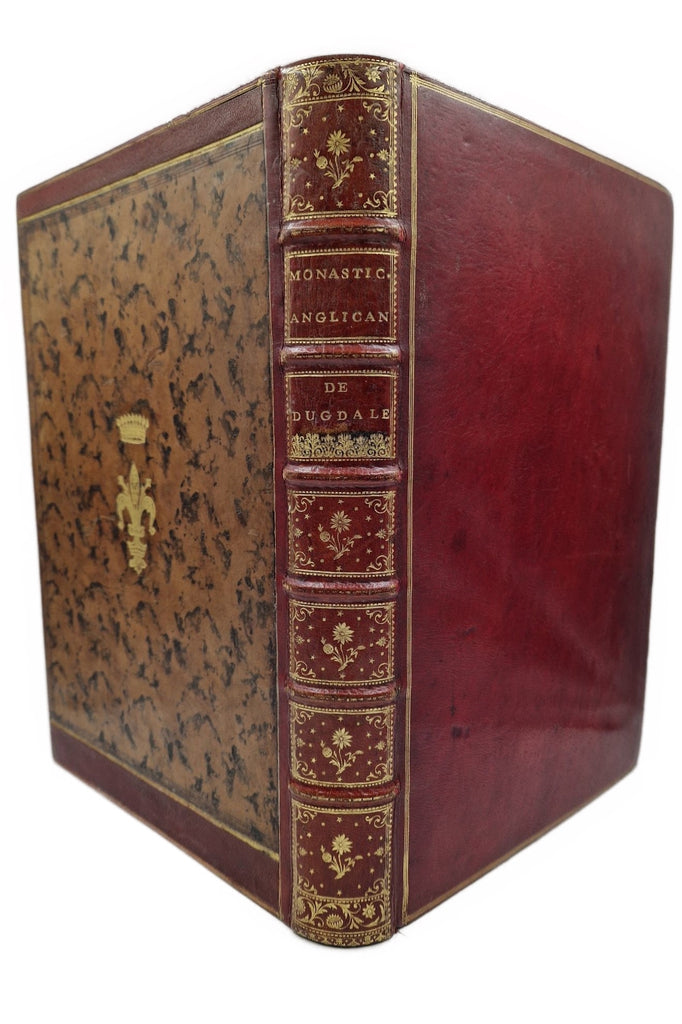Monasticon Anglicanum
DUGDALE, William and Roger Dodsworth










London: Richard Hodgkinsonne. 1655.
First edition. Volume one (first part). Folio in 4s. 332x210mm. [ff.23], pp.1- 608. Ends on 4G4 after the survey of the Benedictine foundations and before the Cluniac. Engraved title page and fifty-one engraved full page (and some folding) plates, many by Wenceslaus Hollar, and with engraved illustrations in the text. The folding map of Thanet is present. In an extraordinary binding of eighteenth century red morocco with triple fillet borders. The lower cover is a highly eccentric confection: a smaller panel of cat's paw calf has been inserted into a red morocco (but not the same as that on the upper cover) covered board. The calf has a large crowned fleur de lys indicating a French aristocratic ownership. Spine with six raised bands, compartments lavishly decorated in gilt and in the second and third compartments, lettered in gilt. Beautifully decorated turn-ins, marbled endpapers, all edges gilt and blue silk ribbon book-mark. Front pastedown has the book label of the bibliophile and writer Charles Whibley (Sum Caroli Whibley) and the bookplate of the Bibliotheque Paroissiale de Notre Dame St Louis. Loosely inserted is a manuscript copy (19th century) of an entry from the diary of William Dugdale referring to the third volume of his Monasticon and a two page copy (20th century) of the Confirmation Charter of Henry I from p437 of the book.
The binding is, notwithstanding its peculiarities, in excellent condition and internally the book is very good, fresh and crisp with the occasional spot of foxing and some browning. Some marginal annotations in various hands.
A somewhat bizarre copy of the Benedictine section of the 1655 first edition of part one of Dugdale's Monasticon (parts two and three followed in 1661 and 1673 respectively). The clue to the binding (which is like nothing we have seen) lies, we feel, in the book's ownership by Charles Whibley. It is unsurprising that the "acerbic High Tory" Whibley should have owned a copy of Dugdale reactionary work of antiquarianism. It is also unsurprising that he should have had an eye for this strange binding. He lived in Paris for a number of years and it seems certain that he bought this there. The bookplate suggests this . The cat's paw panel with the fleur de lys is undoubtedly French. It is hard to see why it was done, though. The rest of the binding (very English red morocco) is in superb condition so it is unlikely that restoration was needed. We can only assume this was done because someone thought that it improved the look of the book or, perhaps would make a recondite point about Anglo French bibliophilic or, given the subject matter of the book, ecclesiastical relations. All the same, a striking and weirdly beautiful object.
